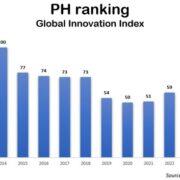The country’s consumer sentiment continued to improve in Q2 2021 as the overall confidence index (CI) increased to -30.9 percent from -34.7 percent in Q1 2021. The improved CI, albeit remaining negative, indicates that the number of households with pessimistic views decreased relative to the number in Q1 2021, but was still more than those with optimistic views. According to respondents, their improved outlook during the current quarter was brought about by their expectations of: (a) more jobs and permanent employment, (b) additional/higher income, and (c) effective government policies and programs, particularly to address COVID-19-related concerns, such as the availability of vaccines, provision of financial assistance, and easing of quarantine restrictions.
Similarly, consumer confidence was also upbeat for Q3 2021 and the next 12 months. In particular, the CI for Q3 2021 reverted to positive 1.3 percent from the Q1 2021 survey result of -2.2 percent, while the next 12 months CI rose to 19.8 percent from the Q1 2021 survey result of 17.9 percent. Respondents attributed their more optimistic views to the same reasons cited above.

Consumer outlook improves, despite remaining negative, across the three component indicators and across income groups for Q2 2021
Consumer outlook in terms of the three component indicators, namely: country’s economic condition, family’s financial situation, and family income also generally improved. In particular, for Q2 2021, the negative CIs of the three indicators narrowed relative to the Q1 2021 survey results.
The outlook of the different income groups showed a similar trend, i.e., although remaining negative, consumer confidence of low-, middle- and high-income group improved for Q2 2021 from Q1 2021 survey results.
Consumers’ spending is less upbeat for Q3 2021
The outlook on household spending on basic goods and services for Q3 2021 declined to 25.4 percent, after posting an improvement of 29 percent in the Q1 2021 survey result.
Buying sentiments for big-ticket items for Q2 2021 is less buoyant and shows record-low buying intentions for big-ticket items over the next 12 months
The percentage of households in the country that considered Q2 2021 as a favorable time to buy big-ticket items dropped slightly to 11.7 percent from 11.9 percent recorded in Q1 2021. Meanwhile, the percentage of households in the country that considered the next 12 months as a favorable time to buy big-ticket items decreased to its lowest reading since Q1 2007 at 3.6 percent from 3.7 percent in Q1 2021.
The percentage of households with savings accounts in banks declines for Q2 2021
The percentage of households with savings accounts in banks decreased to 19.4 percent for Q2 2021 from 20.1 percent in Q1 2021.
Consumers expect inflation, interest, and unemployment rates to increase, but the peso to depreciate for Q2 2021; Inflation to remain within target at 2 to 4 percent
The Q2 2021 survey results showed that consumers anticipated that interest rates may increase and the peso may depreciate in Q2 2021, Q3 2021, and the next 12 months. Respondents also expected the unemployment rate may rise for Q2 2021 and Q3 2021, but decline over the next 12 months. Households anticipated that the rate of increase in commodity prices is expected to remain within the government’s inflation target range of 2 to 4 percent for 2021—at 2.9 percent for Q2 2021, 3 percent for Q3 2021, and 3.2 percent for the next 12 months.
The number of OFW households that utilizes their remittances for the purchase of food and other household needs decreases for Q2 2021
For Q2 2021, 96.2 percent of the 345 OFW household respondents (from 96.4 percent in Q1 2021) indicated that remittance proceeds are used for the purchase of food and other household needs.
About 1 in every 4 households availed of a loan in the last 12 months, of which, 90.2 percent experienced ease in debt application
For Q2 2021, about 1 in every 4 households, or 25.3 percent, availed of a loan in the last 12 months, higher than the 22.9 percent recorded in Q1 2021, of which, 90.2 percent of the respondents found it easy to apply for a loan. However, the remaining 9.8 percent found credit access difficult due to the following concerns: (a) too many requirements, (b) difficulty of finding willing lender, and (c) long processing time.
About the Survey
The Q2 2021 CES was conducted during the period 21 April – 1 May 2021.1 For the Q2 2021 CES, 5,702 households were surveyed – 2,865 (50.2 percent) were from the NCR and 2,837 (49.8 percent) from the AONCR.
Of the said sample size, 5,581 households responded to the survey, equivalent to a response rate of 97.9 percent (from 96.2 percent in the Q1 2021 survey). Respondents consisted of 2,833 households in the NCR (with 98.9 percent response rate) and 2,748 households in the AONCR (with 96.9 percent response rate). The middle-income group comprised the largest percentage of respondents (40.3 percent), followed by the low-income group (36 percent) and the high-income group (23.7 percent). (BSP)
——————————————————————————————————————-
1 Approval for the conduct of the Q2 2021 CES was issued on 10 January 2019 through PSA Approval No. BSP-1901.






